Having been to the Ray Mica mine more times
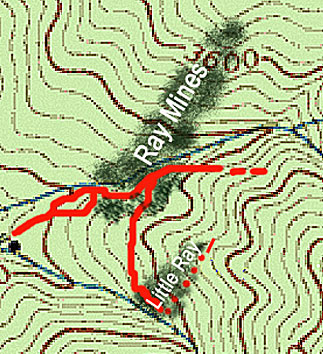
than we can count, Chrissy and I decided that a change of pace was in order, so we payed a visit to the Little Ray mine to see what we could uncover. The Little Ray, located about 1/2-mile south of the Ray, is most easily accessed by hiking the trail to the Ray and then taking a right hand turn at the southernmost mine shaft and following an overgrown road to the base of its spoil piles.
According to the "Mica Deposits of the Blue Ridge in North Carolina, Geological Survey Professional Paper 577" by Frank Lesure (1968), the Little Ray (Pat) mine was mined for muscovite from 1955 to 1957. The Little Ray is aptly named as the tabular pegmatite is only 2 to 5 feet wide, whereas, the irregular tabular Ray Mine's width reaches up to 60 feet. According to Lesure, accessory minerals at the Little Ray include, garnet, tourmaline, apatite, and beryl.
I had, on my own, briefly visited the Little Ray on a couple prior occasions, but never seriously attempted to collect there. Since the nearby Ray is such a prolific location, I could really 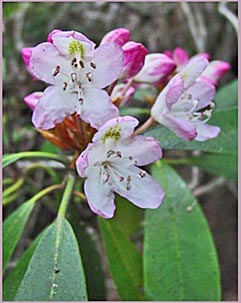 never see a reason to branch out to the
Little Ray. But, what the heck, maybe we'd find something great there and you can never tell unless you give a new location a chance.
never see a reason to branch out to the
Little Ray. But, what the heck, maybe we'd find something great there and you can never tell unless you give a new location a chance.
The appearance of broken pegmatite on the trail told us that we had come upon the Little Ray's spoil piles that extend downward from the crest of a steep ridge to a creek valley that an extreme drought has rendered nearly bone dry. The lush green forest belied the drought though as the trees and plants seemed to be getting all the water they needed.
The Little Ray consists of a series of shafts, stopes and drifts that extend for approximately 660 feet along a northeast strike. It was easy to see where the plants were receiving their water as the lowermost shaft was nearly completely filled with groundwater. The rhododendron were still in full bloom in some of the more shadowed areas.
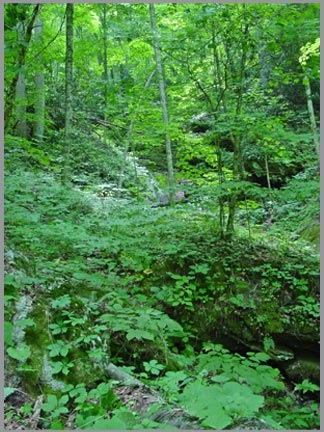
Creek Valley
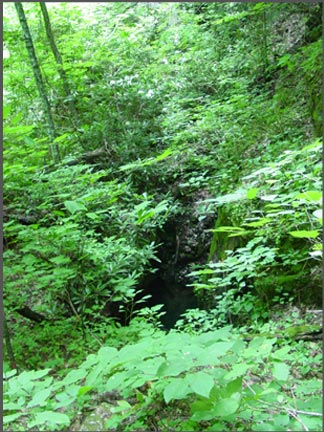
Little Ray mine shaft
| |
In order to settle on a place to dig, we followed the mine workings up the steep and overgrown slope.
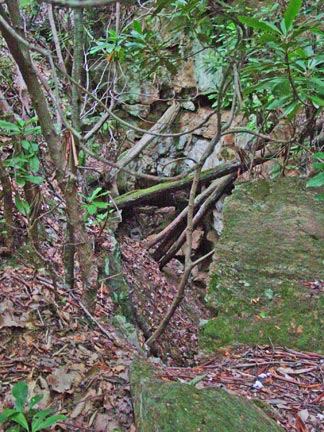
Drift
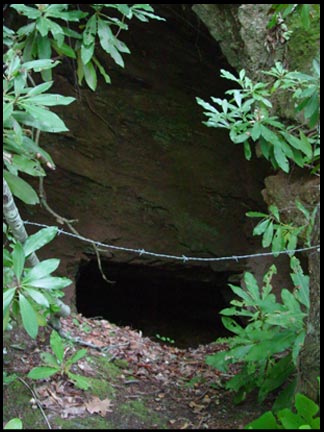
Upper Shaft
| |
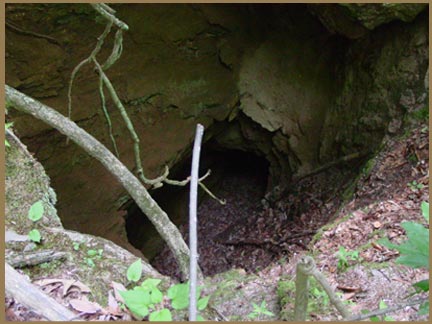
Inclined Shaft
|
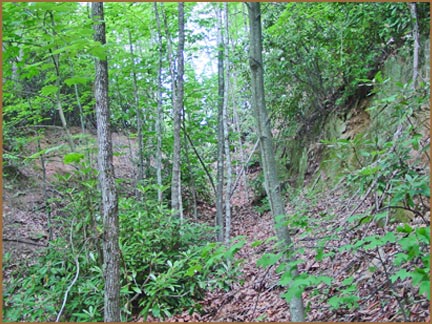
Upper Cut
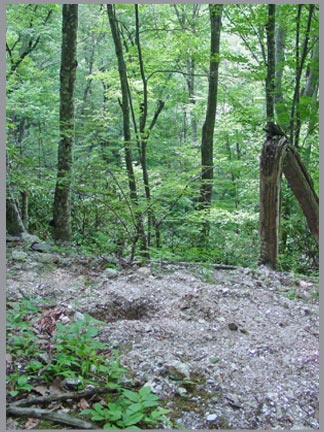
Upper Spoils
| |
After checking out the general area, it was evident that relatively few rockhounds have dug at the Little Ray, as compared to the Ray. The majority of the spoil piles are heavily overgrown and appear to have remained untouched
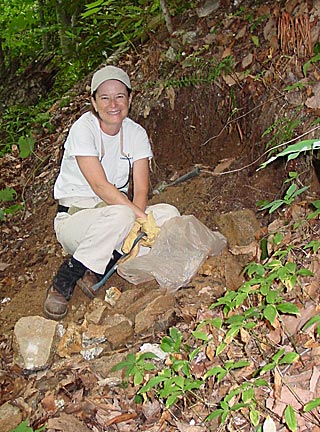
since they came to rest nearly fifty years ago. From our experience, we attributed this to one or more of the following reasons: 1) Few rockhounds know of or where to find the Little Ray; 2) the collecting at the Ray has been so good over the years, why bother with the Little Ray or; 3) there isn't much to be found at the Little Ray.
We spent about 5 hours moving and inspecting as much rock and dirt as we could, hoping but not expecting to find something worthy of our efforts. Chrissy, who just loves to be in the woods digging no matter what, showed little concern for our not finding much of anything besides a few odds and ends.
After digging in several random spots along the slope, it appeared to us that the Little Ray's pegmatite is more simple than the Ray Mine's, with far fewer of the highly sought after accessory minerals. We did bring home a few representative specimens as pictured below, to at least demonstrate that we had been there and done that.
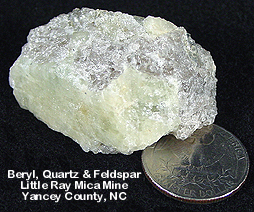
|
Click on each specimen picture to enlarge
Even though the Little Ray didn't "give it up" on our first visit there, we'll likely return to try again one day. After all, we have spent many a day at the generally prolific Ray Mine with not much more to show for our time than what we found at her little sister. With the Little Ray's many shafts, cuts and stopes, finding just the right place to dig may just be a function of man and woman digging hours.
Speaking of the Ray Mine . . . While Chrissy spent the following day visiting her parents, I got up way early in an attempt to get ahead of the summer heat, drove out to the Ray and dug a mighty hole. As you can see on the next page of this report, the old girl proved yet again that she is still full of nice surprises.
Report continued . . . . . . .
Click Here for Next Page